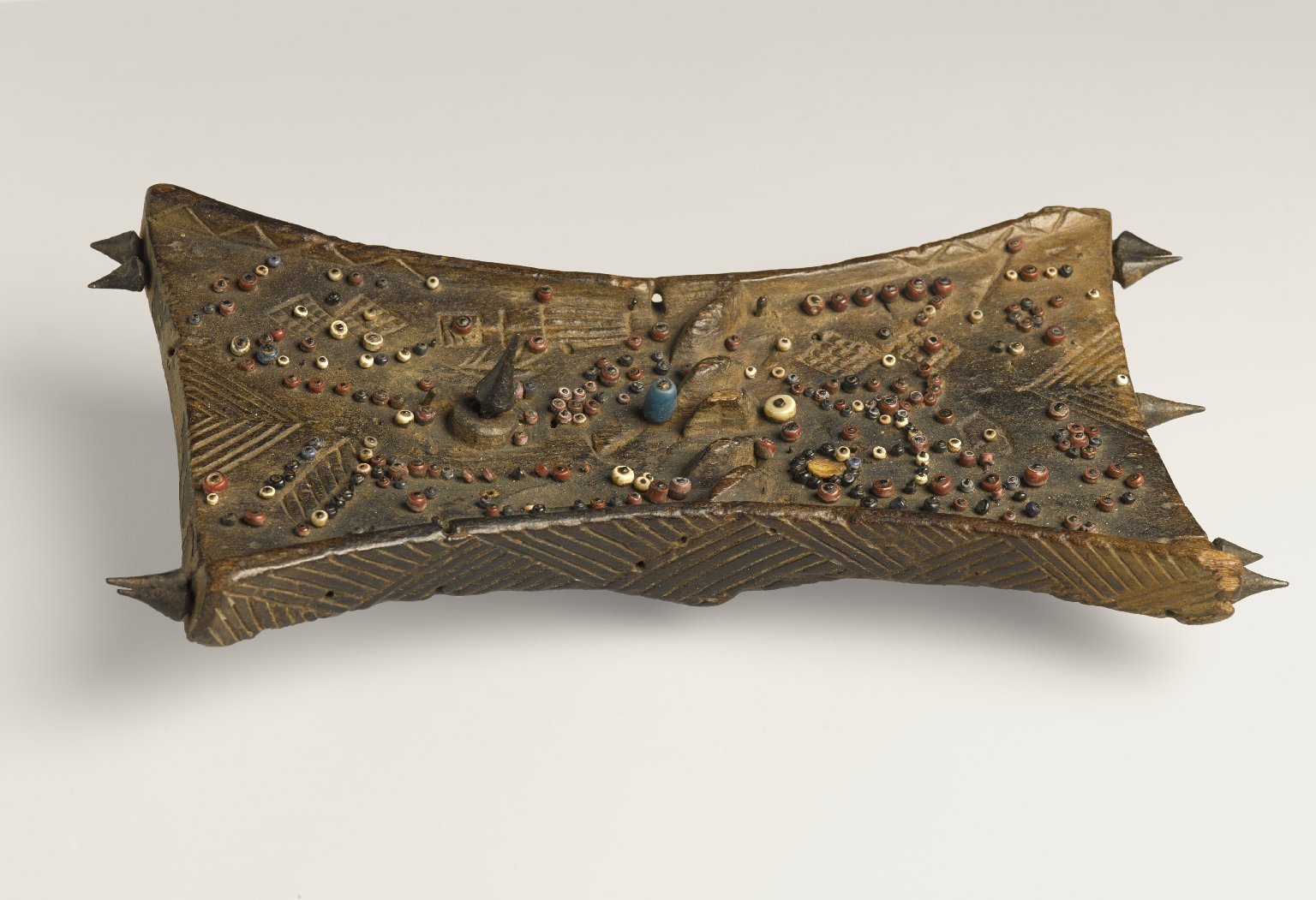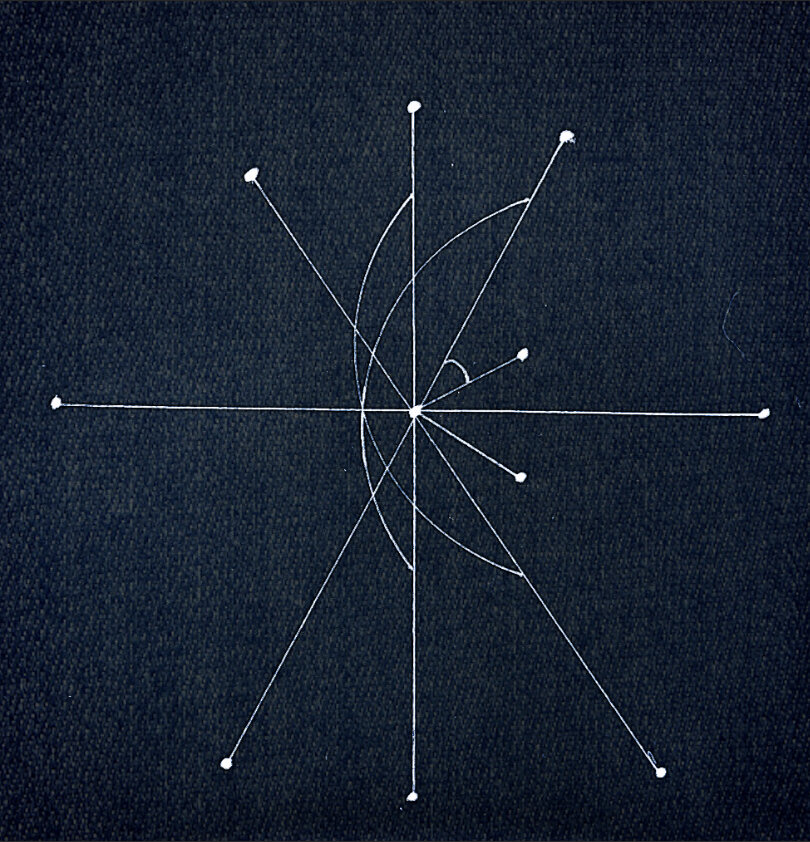Molecular Part 3: A Code of Being
A lukasa memory board
https://www.brooklynmuseum.org/opencollection/objects/102210
“The thing that makes jazz so interesting is that each man is his own academy. By and large, if he’s really going to be persuasive, he learns about other academies, but the idea is that he must have that special thing. And sometimes you don’t even know what it is.”
— Cecil Taylor
Interior vs. Exterior
Although I was privileged to have studied at important institutions of higher learning, one of the most useful artistic lessons came from my father who, on hearing me rave about how great this or that artist was, looked at me and said: “I don’t want to hear about those artists. What I want to know is who my son is, musically.”
Instead of taking offense, I accepted my father’s challenge. Who was I, musically? We learn a lot by studying and imitating the greats. But imitation is only a step along the way to self-discovery. Every artist aims to find and develop their own signature style and voice.
Initially I looked toward great artists like John Coltrane for examples of how to develop, but when I tried wearing his shoes I found they didn’t fit. While I continued looking at Coltrane’s works for guidance on how to articulate my own theories concerning composition, improvisation, and performance practices, I knew I was headed elsewhere.
Pulitzer Prize-finalist and composer Wadada Leo Smith encourages students to analyze compositions of the masters in search of the “unique moment” in each piece. A signature passage may occur only once, yet it is the birthmark that defines the piece as the work of that composer and no other. Wadada would often say, “When composing, you should be trying to solve your own compositional problems.” That led me to a period of self-examination as I sought for that unique moment in my own work.
John Coltrane: 1-2-3-5
Webster’s Third New International Dictionary, Unabridged, together with its 1993 supplement, contains some 470,000 words — only a fraction of the combinations that could be built from the 26 letters of the alphabet. The musical alphabet contains a mere seven letters: A through G. Out of this already limited Palette, John Coltrane often select four notes to encode music compositions— these four-note permutations became social security numbers serving as familiar markers of identity. Commonly celebrated for his “sheets of sounds,” there is more and less to Coltrane. The use Coltrane makes of 4 of the 7 notes suggests that he belongs among the ranks of minimalist composers such as Riley, Reich, Glass, Young, and Julius Eastman. Slice four apples a thousand times and you still have only four apples.
Within a specific composition, Coltrane would explore those notes through improvisation, as well as using them to navigate the harmony of a piece. Coltrane’s use of specific notes would allow the listener to understand his musical “DNA,” just as a sports analyst might remark on the “DNA” of a team, saying its team’s use of seven footers might allow them to grab more rebounds than the opposing squad.
John Coltrane’s musical “DNA” (or code) unlocks the characteristics that make him unique and identifiable to both the layperson and the trained musician. This inspired me to develop my own structural paradigm. The following is my example of such influence:
For the full album, visit:
https://jamesbrandonlewis.bandcamp.com/album/molecular
“Begin now to study the little things in your own door yard,” George Washington Carver advised, “going from known to the nearest related unknown, for indeed each new truth brings one nearer to the creator.”
When collaborating with fellow musicians in the context of performing a piece such as “Helix,” which is directly related to Molecular Systematic Music, I always rely on the musicians’ well-trained instincts to generate variables not pertaining to the system itself. My goal in developing MSM is simply to encourage other players to discover their own innate tendencies.
Molecular Systematic Music: What’s in a Dot? The Atom in Adam
In thinking of creating Molecular Systematic Music, I often ponder two words we associate with different kinds of creation: Adam and Atom. These words share sound, letters, and differences. Adam refers to the association of the creation of man as mentioned in the Bible, while Atom refers to the smallest particle of an element that can exist alone or in combination. We shall focus on the latter as it pertains to MSM. The correlations drawn here between Adam and Atom refer not only to the shared letters, nor to the fact that atoms dwell within Adam, but it is the idea of creation and the multitudes of matter extracted from a single Adam that caught my attention.
This observation sparked my imagination, and once again placed music in a different context, inspiring vast amounts of new musical compositions. I am reminded that the elements of melody, harmony, and rhythm that make up music all began (as in life) from a single Atom or Adam.
Both music and biology use lines and dots as simple visual cues to represent complex information. The role of the musical staff, as the container of musical notes in the Western tradition, is a kind of biological cell holding information: the organization of sound. The architecture of the staff is comprised of 5 lines and 4 spaces, and the dots placed within the staff represent notes of various lengths to represent time. In Molecular Biology, dots represent atoms and the lines connecting the dots represent bonds between those atoms.
“As atoms are the building blocks of matter, intervals [the distance between two notes of music] are the building blocks of melody & harmony.”
— Jazz theory book by Mark Levine
MSM Polaris Graphic: A Further Look
The visual elements used in the MSM Polaris graphic were influenced by biology as well as music and, as previously stated, by the African American quilting tradition, as well the lukasa, a dynamic “memory board” used by the Congo’s Luba people as referenced in the book Hidden in Plain View by Jacqueline L. Tobin & Raymond G. Dobard.
My influences in constructing the visual elements of this graphic come from several other sources: Valence and the Structure of Atoms and Molecules by Chemist Gilbert N. Lewis and The Architecture of Molecules by Chemist Linus Pauling & Scientific Illustrator Roger Hayward.
1.) The upper half of the Polaris graphic denotes |BMBE|: Basic Musical Bonding Elements: Major, Minor, Augmented, Diminished
2.) The lower half of the Polaris graphic denotes |IP|: Intervalic Parings
Artist Journal Entry 1-19-2021
I recently created a formula to denote the building process or steps needed for a person to get to the truest version of who they are musically by way of using the Polaris Graphic. The formula was birthed out of a natural process of directions I was implementing within my art practice at the start of the formation of MSM, circa 2011.
The Formula is a three Step Process:
Intervalic Parings |IP|
Basic Musical Bonding Elements |BMBE|
Code of Being |COB|
IP + BMBE = COB
Closing
In developing MSM, I ponder daily the correlations between biology and music. At times these correlations are easily seen; at other times they are quite difficult to see, because I am not a biologist. I have shaped my understanding of music as it relates to the simplicity of nature and its unseen-seen complexities. I exist as a part of (rather then separate from) nature, and the sounds of its biological structures become music to draw from:
“Nature makes no noise. The howling storm, the rustling leaf, the pattering rain, and no disturbance, there is an essential and unexplained harmony in them.”
— Henry David Thoreau
James Brandon Lewis is a critically- acclaimed composer, saxophonist, and writer. He has received accolades from NPR, ASCAP Foundation,Macdowell, and The Robert Rauschenberg Foundation. He has been described as “ a saxophonist who embodies and transcends tradition” by The New York Times, and a promising young talent having listened to the elders by Jazz Legend Sonny Rollins. The saxophonist has balanced a deep, gospel -informed spirituality with Free-Jazz- abandon and hard-hitting funk-meets-hip-hop underpinning - Rolling Stone Magazine. He has released several critically-acclaimed albums, most recently highly touted 2021's Jesup Wagon and tours internationally leading several ensembles, and is a member and co-founder of American Book Award winning Ensemble Heroes Are Gang Leaders. James was recently voted Rising Star Tenor Saxophonist by Downbeat magazine's 2020s International Critics poll and most recently named top Tenor Saxophonist for 2021 by Jazz Times Magazine. Lewis attended Howard University, received his M.F.A from California Institute of the Arts and was recently named the Inaugural recipient of the Phd Fellowship in Creativity by the University of the Arts in collaboration with The Balvenie, drummer and Academy Award-Winning Director Ahmir “Questlove” Thompson.




